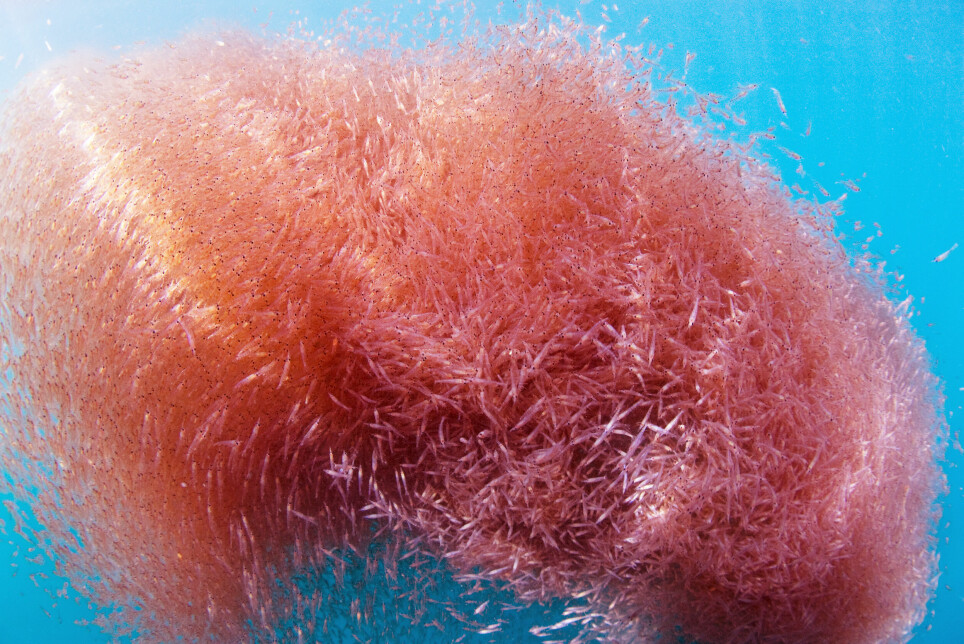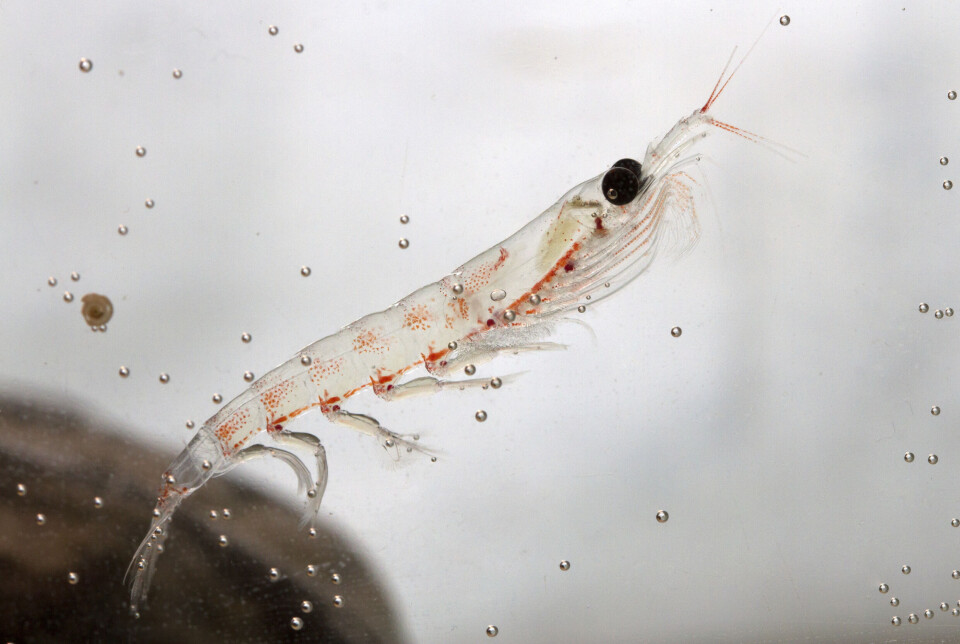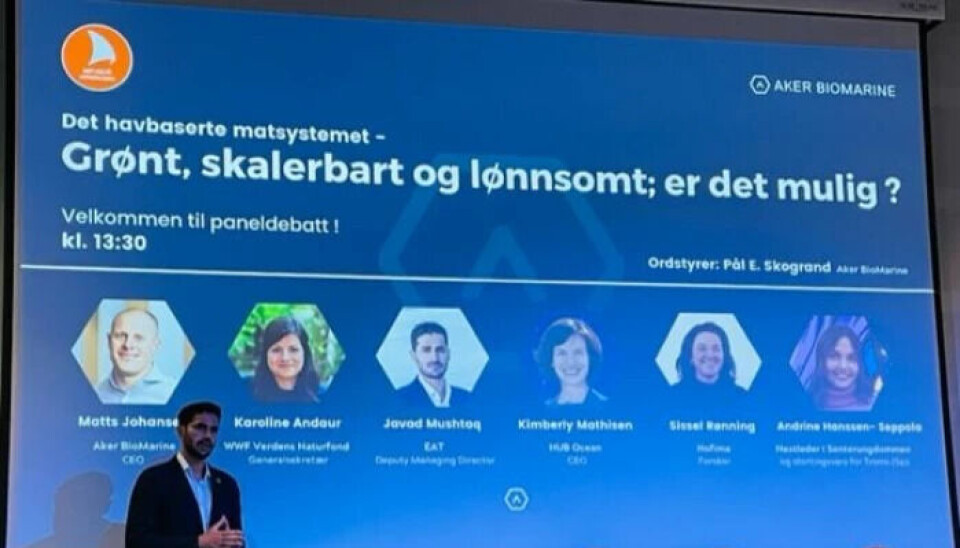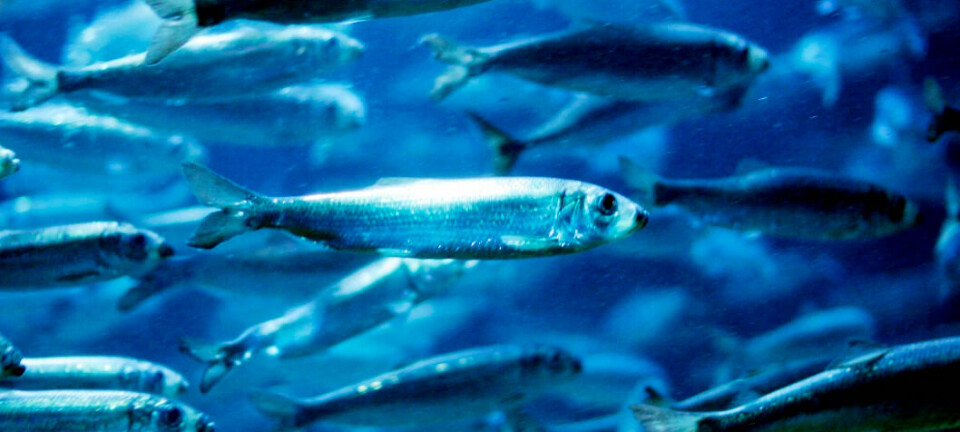
Can Norway make money from a tiny crustacean?
The ocean contains endless untapped food resources, such as seaweed, kelp, algae and krill. But it costs time and money to turn them into useful products. One company has now succeeded in exporting several thousand tonnes of krill for animal feed and nutritional supplements.
Norway has never exported more fish than in 2021.
Exports set a new record of NOK 120 billion, or the equivalent of 42 million meals a day, according to fisk.no.
But the ocean is a treasure trove of other nutritious resources that we don't think of as seafood.
How can products like sea urchins and algae be harnessed to feed the world's population?
And is it possible to do it profitably on a large scale, without negatively affecting the environment? This exact issue was recently debated at Arendalsuka, the largest political gathering in Norway, held annually in the autumn since 2012.
Unique access to ‘blue’ food
Norway is in a unique position to develop both food and animal feed from algae, seaweed, kelp and species at the bottom of the marine food chain. And some companies have succeeded.
“We now export tons of krill products for animal feed and people. This is one of the protein sources that has the smallest climate footprint,” said Matts Johansen, CEO of Aker BioMarine.
But developing new resources from the sea is difficult, bordering on the impossible, he says.
It has taken 16 years to get this far, he said.
Approved as seafood
It requires years of research to substantiate that products are suitable as food or nutritional supplements and without negative health consequences.
The next step is getting regulatory approval to sell and export products, and can be a test of patience. Applying and getting approval can take several years.
One bright spot this year was that seaweed and kelp were approved as seafood under the Norwegian seafood export regulations.
These kinds of small changes can encourage more innovation, the panellists said.
- RELATED: Serving up edible kelp to Michelin restaurants and supermarkets
- RELATED: Kelp products could surround us in the future - but how sustainable will the industry be?
Will reduce the climate footprint for farmed salmon
The Norwegian aquaculture industry imports 90 per cent of its fish feed. The industry’s goal is to produce more of this feed in Norway, to reduce the industry’s climate footprint. Krill can help here.
The company Aker BioMarine has now developed a number of products in close collaboration with researchers in Norway and abroad.
“We have developed several protein and omega-3 products, all from the same raw material — krill,” Johansen said to sciencenorway.no.

Positive consequences as salmon feed
The first product to reach markets was a protein supplement used in feed for farmed salmon. Krill is a type of tiny shrimp that salmon like to eat. It contains many of the nutrients that salmon need.
“The supplement makes the salmon more robust in their cages, and less prone to disease,” Johansen says.
The research that demonstrates this was conducted in collaboration with the Norwegian food research institute Nofima.
Requires completely new technology and consumer acceptance
The Nofima researchers closely follow coastal industries.
But is it possible to extract more food from the sea, without harming the environment?
“I am a technology optimist,” said Sissel Rønning, a Nofima researcher.
She believes it’s possible to produce more environmentally friendly food if we change the way it is produced.
“This will require consumer acceptance and completely modern, ground-breaking technology to produce good, safe food,” Rønning said.
‘Blue’ food part of the solution
“We are about to exceed the limits of what the planet and its biological and biophysical processes can actually tolerate. As the UN Secretary General says, we have reached ‘Code Red’ for humanity,” said Javad Mushtaq, who works at the non-profit organization Eat and who was also at Arendalsuka.
He and his colleagues at Eat believe that products from the sea must be part of the solution to providing the world's population with healthy and sustainable food.
But this use requires effective management.
Aquaculture can destroy habitats and threaten wild fish
A third of marine fisheries are overfished, and some fishing technologies have serious consequences for ecosystems, climate change and wildlife.
“Aquaculture can also have significant effects, by destroying habitats, polluting water and relying on wild fish and agricultural crops for feed in an unsustainable way,” Mushtaq says.
WWF also believes that people must eat more than just one group of species from the sea.
“At the same time, we must make sure that the sea can tolerate this resource extraction. And the 1970s way of producing seafood is not sustainable,” said Karoline Andaur, Secretary General, WWF, World Wildlife Fund Norway.

Exports 50,000 tonnes of krill products
After 16 years of development, research and applications for approval, Aker BioMarine has established a billion-dollar industry with the USA as one of its largest markets.
The company now exports 50,000 tonnes of various krill products a year.
Feed for salmon farming makes up about half of these exports. The rest is sold as omega-3 food supplements, mainly in the USA.
Unlike cod liver oil in the form of fish oil, krill products contain a type of fat that does not need to be absorbed by the liver, according to Aker BioMarine’s Johansen.
Now the company is building a factory in Follo, south of Oslo to produce protein supplements.
“These supplements can be used both by bodybuilders and by the sick and elderly,” Johansen said.
New krill products
The company is also working to develop products that it believes can play an important preventive role for different health problems.
Aker BioMarine is listed on the stock exchange with Aker as the main owner, with the Norwegian billionaire Kjell Inge Røkke on its board.
“Røkke has a very strong belief that we will succeed in developing krill products for the world market. He is personally very involved in the operation on a daily basis,” Johansen said.
The company now has 550 employees, of which 15 have a doctorate.
The company collaborates with researchers in Norway and internationally, including England and the USA.
The research to develop the first products was conducted in collaboration with Nofima, the University of Bergen, the Arctic University of Norway in Tromsø, as well as German, English and American universities.
Translated by Nancy Bazilchuk
———
Read the Norwegian version of this article at forskning.no
------

































